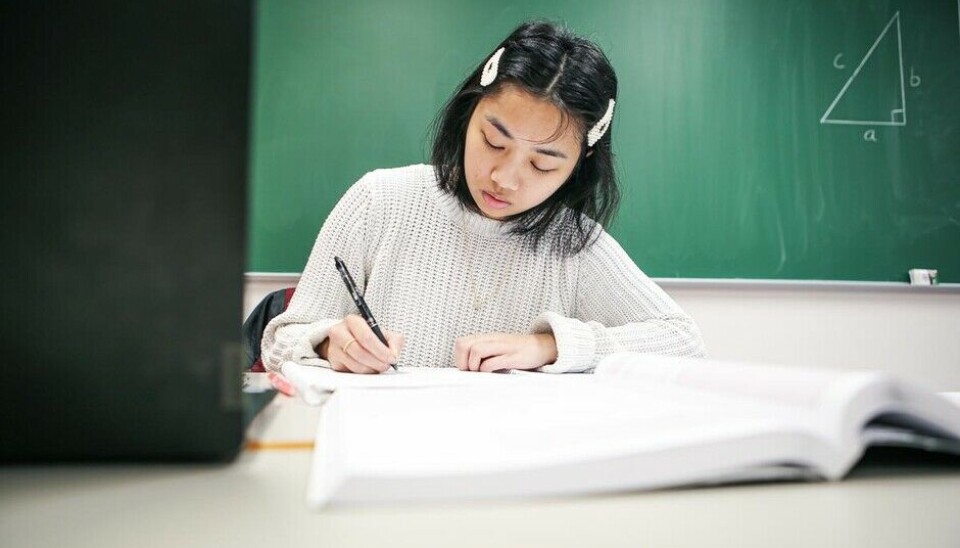THIS ARTICLE/PRESS RELEASE IS PAID FOR AND PRESENTED BY THE University of Agder - read more

Problem solving activates and motivates students
Linda Gurvin Opheim has explored how teachers use problem solving to teach students mathematics.
There is a lot of research about mathematics learning and students, but less about mathematics teaching and teachers.
University of Agder (UiA) researcher Linda Gurvin Opheim has done something about that. She recently defended her doctoral thesis that looks at how teachers facilitate mathematics learning for their students.
“Teachers face a number of practical challenges in the classroom that researchers may not always pay enough attention to in their theoretical studies,” Opheim says.
It is precisely the gap between research theory and teaching practice that she wanted to close in her doctoral thesis. She has researched how teachers instruct for students to learn mathematics. More specifically, she has looked at how teachers use problem solving as an instructional method.
“The aim of the thesis is to gain a deeper insight into what teachers look for in the mathematics tasks the students work on,” says Opheim.
Problem solving dominates teaching

Problem solving is the most common teaching method in mathematics lessons in this country. That is why Opheim chose the design and use of mathematics problems as the topic of her thesis.
She conducted a case study of four teachers at two different vocational schools and collaborated with them for a year. First she asked them what kind of tasks they were missing. Then she came up with drafts for mathematical tasks for each individual teacher.
In her thesis, she analysed the entire process - from drafts via discussions with the teacher, testing in the classroom, new discussions with the teacher and review of the student response - to gain a deeper insight into how teachers work with mathematics tasks.
“The teachers I worked with wanted to tailor the tasks to the needs of the individual student group. They asked me to create tasks that addressed the specific challenges the students had with mathematics,” says Opheim.
The goal is more than learning
“The main purpose of mathematical tasks is to teach the students mathematics. But there are a number of other smaller goals that the teachers want the tasks to aim for,” says Opheim.
The problem-solving tasks should solve various challenges in the classroom. Opheim summarises the challenges in three points:
- activate
- motivate
- provide understanding
“The teachers focus on the purpose of the given tasks, for example that they should activate the students, and make them look for different mathematical connections. The mathematical tasks cannot always address everything at the same time but can, to varying degrees, motivate, activate and challenge the students,” she says.
Discussions as a learning method
Opheim refers to the so-called social turn in mathematics education research. The social turn emphasises that teaching and learning are not individual processes but take place together.
That makes discussions and the presentation of mathematical approaches important. This social learning theory is one of the theories used by Opheim and other researchers at the UiA Centre for Excellence in Education, MatRIC (Centre for Research, Innovation and Coordination of Mathematics Teaching).
“That kind of teaching is an example of theory that it is not easy for the teacher to apply in the classroom. Such teaching requires strong mathematics skills and broad knowledge about various teaching methods and also the ability to control discussions in the classroom,” Opheim says.
When the maths problem-solving required classroom discussions, some of the teachers did not want to use them. The reason was precisely that discussions are difficult to carry out in practice.
Opheim points out that classroom discussions may, for example, be obstructed by a linguistic distance between teacher and students. There may be large linguistic differences between a middle-aged teacher and a sixteen-year-old who wants to become a hairdresser.
Obstacles to using problem-solving tasks
“The teachers are aware of what they are good at and less good at and wanted maths tasks that would balance this out,” Opheim says.
Teachers need to feel confident that the tasks will work in the given class before presenting them. Opheim found that there were three aspects in particular the teacher might struggle with:
1) How to teach problem solving (didactics)
2) How to discuss the solution strategies (communication)
3) Whether the teacher was confident in the topics used in the task (mathematics competence)
“An important finding in my research is that the mathematics tasks will help the student to learn mathematics, but that the tasks must also be such that the teacher can use them to develop the classroom culture and his own teaching competence in mathematics,” Opheim says.

This article/press release is paid for and presented by the University of Agder
This content is created by the University of Agder's communication staff, who use this platform to communicate science and share results from research with the public. The University of Agder is one of more than 80 owners of ScienceNorway.no. Read more.
See more content from the University of Agder:
-
This researcher has helped more economics students pass their maths exams
-
There are many cases of fathers and sons both reaching elite level in football. Why is that?
-
How we used plants to protect ourselves from evil
-
What is it like for nurses to promote health behind bars?
-
This can make life easier for new maths teachers
-
Norwegian women were burned at the stake here




































